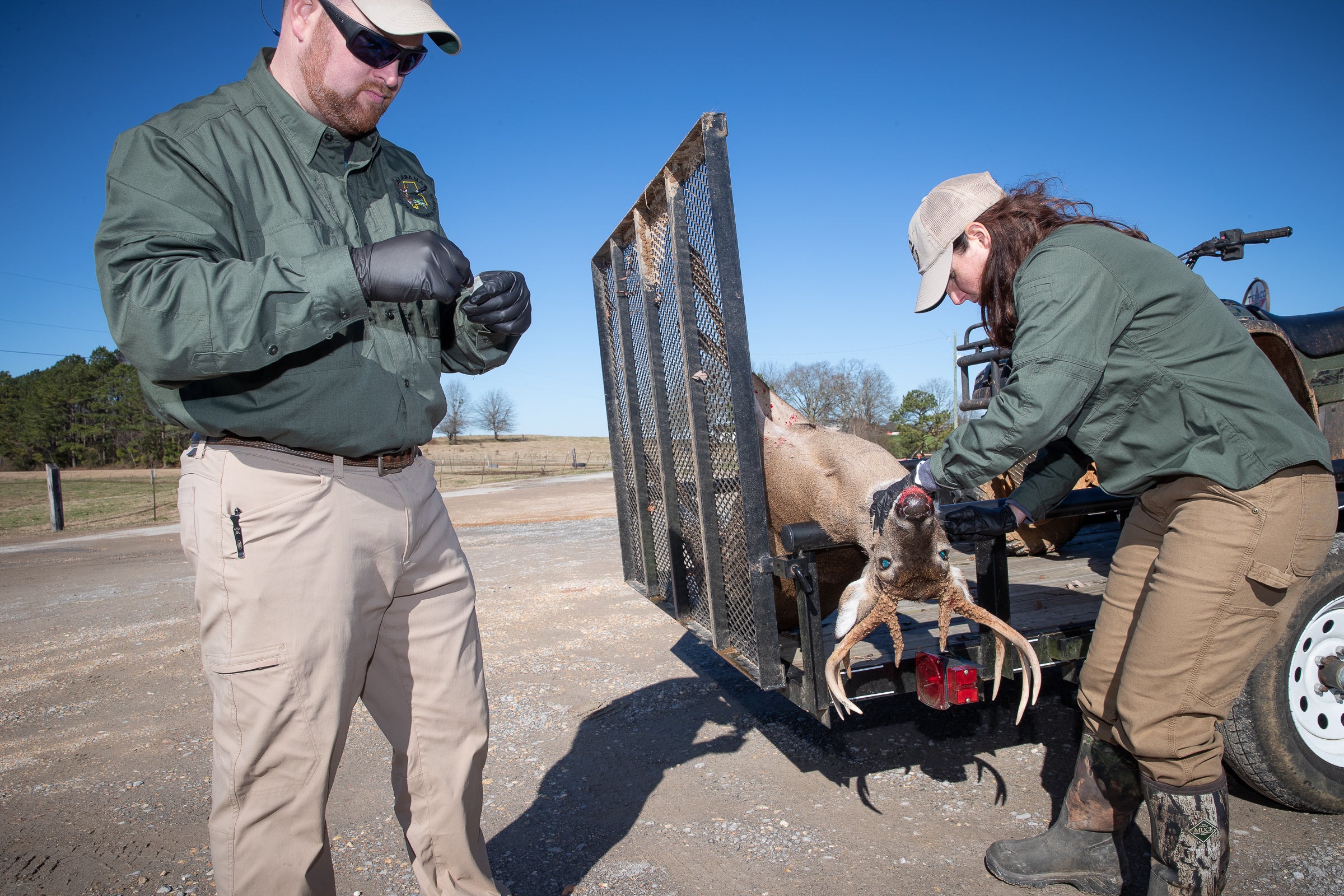By DAVID RAINER, Alabama Department of Conservation and Natural Resources
With the nation focused on the coronavirus, very little has been heard about the status of chronic wasting disease (CWD) in Alabama.
Chuck Sykes, Director of the Alabama Wildlife and Freshwater Fisheries (WFF) Division, has some cautious good news about the spread of CWD in the South.
“Despite what you read on Facebook, just because COVID-19 hit, CWD didn’t go away,” Sykes said. “We just haven’t been talking about it as much. We’re still taking samples. We had a target of about 1,630 samples last year, and I think we took nearly 1,700, covering all counties, with no positives.”
Last year, Mississippi and Tennessee reported new positive CWD tests. That cautious good news is the infections are not spreading toward Alabama.
“Right now, we’re staying basically status quo from last year,” Sykes said. “It looks like the cases in Tennessee and Mississippi are moving northwest. We have no new zones, nothing any closer than what we had last year. And nothing has tested positive in Alabama, so we’re on the same protocol as we were on last year.”
Visit www.outdooralabama.com/CWD-Info and scroll down the page to view the Alabama CWD Strategic Surveillance and Response Plan, which establishes a CWD Management Zone around the location of a CWD positive deer and implements specific response protocols dependent on the distance from the CWD positive. Positive deer in Pontotoc County, Mississippi, and Hardeman County, Tennessee, have prompted a response affecting Alabama’s surveillance activities. Portions of five counties in Alabama – Colbert, Franklin, Lamar, Lauderdale and Marion – are within 50 miles of those positives. Sampling and testing for CWD have been increased substantially in those counties.
CWD has only been shown to affect members of the deer family, including whitetails, mule deer, elk, moose and caribou. CWD is a fatal neurological disease, a form of transmissible spongiform encephalopathy (TSE), which causes lesions on the brain. As the disease progresses, the affected animal will develop holes in the brain and eventually die. Infected animals may be infected for 5 years or longer before they exhibit symptoms.
The first case of CWD was discovered in Colorado in 1967. The disease spread very slowly, only taking in a 15- to 20-county region on the Colorado, Nebraska and Wyoming borders in the next 30 years. In the late 90s, CWD was detected in Saskatchewan. That incident was traced to captive elk from South Dakota that were transported to Canada. CWD continues to spread and now has been found in 26 states and three Canadian provinces. South Korea, Finland, Norway and Sweden also have detected CWD. South Korea’s CWD-positive animals can be traced back to the live transport of captive deer from infected facilities in Saskatchewan. Over the past 20-plus years, the movement of live cervids or infected carcasses by humans has contributed significantly to the increased spread of the disease.
Regulations that banned the importation of live deer into Alabama have been in effect for many years. The regulations were amended a couple of years ago to prohibit the importation of deer carcasses from all states and countries. Visit www.outdooralabama.com/cwd for regulations about importing deer parts from out-of-state.








